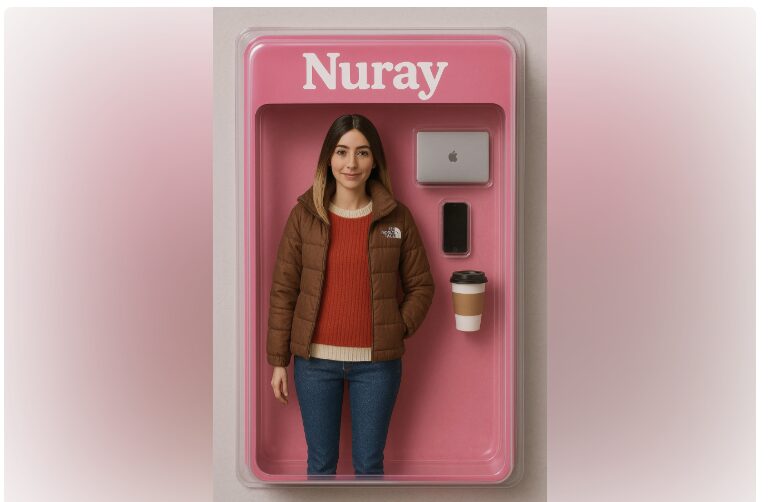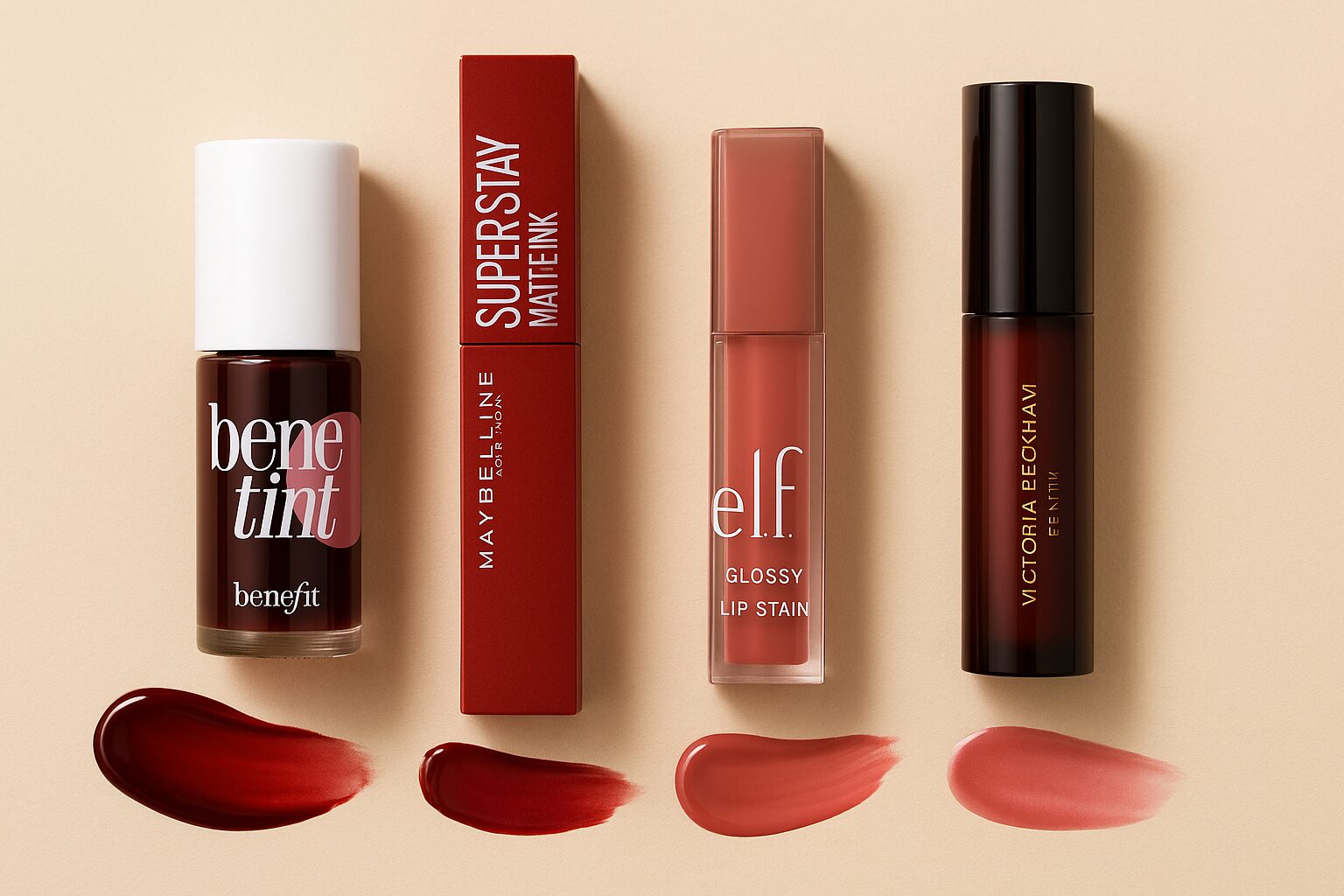The entertainment world is buzzing with the latest trend: the fusion of Barbie and AI, specifically through the innovative ‘AI Barbie Box.’ This exciting development is not just about toys; it’s about how technology is reshaping our experiences with beloved characters. As we explore the ‘Barbie Meets ChatGPT: New AI Barbie Box Trend,’ we dive into how AI is changing the landscape of play, creativity, and storytelling.
Key Takeaways
-
The AI Barbie Box combines traditional play with cutting-edge technology, offering a unique interactive experience.
-
Generative AI is changing how content is created, allowing users to engage with Barbie in new and creative ways.
-
Public response to AI Barbie has been mixed, highlighting both excitement and concern over AI’s role in children’s toys.
-
The success of Barbie as a cultural icon shows that AI cannot fully predict the unpredictable nature of popular trends.
-
As AI continues to evolve, its integration into toys like Barbie may set the stage for future innovations in the toy industry.
The Dawn of AI in Entertainment
It’s wild to think about how much AI is changing entertainment. Seriously, it’s not just a little tweak here and there; it’s a full-on transformation. From predicting what movies will be hits to actually creating art, AI is getting its digital fingers into everything. It’s both exciting and a little scary, to be honest.
Transforming Creative Processes
AI is not just automating tasks; it’s becoming a creative partner. Think about AI generating music, writing scripts, or even designing entire virtual worlds. It’s like having a super-powered assistant that never runs out of ideas. I’ve seen AI create some pretty cool stuff, but I still wonder about the role of human artists in all of this. Will AI replace us, or just change how we work?
AI’s Role in Film Production
AI is making a big splash behind the scenes in film. It can analyze scripts to predict audience reactions, help with casting by finding the perfect actors based on data, and even create special effects faster and cheaper than ever before. It’s kind of like having a crystal ball that helps studios make smarter decisions. I read somewhere that AI can even help with storyboarding, which is pretty mind-blowing.
The Future of AI in Storytelling
Where is all this heading? I think AI will play an even bigger role in how stories are told. Imagine AI creating personalized stories for each viewer, or interactive narratives that change based on your choices. It’s like stepping into a video game, but with a movie. The possibilities are endless, but I also worry about the potential for misinformation and the loss of unique human voices in storytelling.
I think the biggest challenge will be figuring out how to use AI in a way that enhances creativity, rather than stifling it. We need to make sure that AI is a tool for artists, not a replacement for them. It’s a delicate balance, but I’m hopeful that we can find a way to make it work.
The Cultural Phenomenon of Barbie
Barbie’s success? It’s way bigger than just box office numbers. It’s a cultural phenomenon that has grabbed people worldwide. I think it’s fascinating to see how a doll can have such a huge impact.

Initial Predictions
Before the “Barbie” movie came out, Sinalytic made a prediction: it would make around $700 million in theaters, home video, and TV over ten years. They looked at Margot Robbie’s past work and other things to figure that out. But, wow, were they wrong! The movie did way better than anyone thought. It makes you wonder how accurate these predictions really are.
Breaking the Billion-Dollar Barrier
“Barbie” hit the billion-dollar mark super fast – just 17 days after it was released. That’s a huge deal! It shows how much people loved the movie and how it really hit a nerve. It’s amazing to see a movie become such a big cultural event.
Understanding the Outlier
Sinalytic’s AI did what it was supposed to do – it showed that “Barbie” would be a hit and a good bet for the studio. But it couldn’t see that “Barbie” would become a massive cultural thing, a once-in-a-decade kind of movie. It’s a good reminder that even with all the data in the world, you can’t always predict what’s going to happen.
It’s interesting to think about how much of a movie’s success is due to luck or timing. Sometimes, a movie just clicks with people in a way that no one can predict. That’s part of what makes the movie business so exciting, and so unpredictable.
Generative AI: New Horizons in Content Creation
Generative AI is really changing things up in content creation. It’s like opening a door to possibilities we didn’t even know existed. It’s pretty cool, actually.
Unleashing Creativity
Generative AI? It’s all about training these complex networks with tons of data. They learn patterns and then bam, they can make new stuff. This is letting artists try out new kinds of art. For example, there’s this beatboxer, Harry Yaffe (aka Reeps One), who uses AI to make a “second self” that copies his voice. Wild, right?

Everyday Magic
Remember back in 2022 when ChatGPT and Midjourney came out? That was when generative AI became something everyone could use. Now, anyone can make art, write stories, or even create music. It’s changing how we think about making stuff.
Expanding Sonic Lexicons
Harry Yaffe’s music is a great example. The AI makes these percussive sounds that add so much to his music. It throws in “ghost notes” and new phrases, which really expands his sound. It’s like the AI is another instrument.
This whole interaction between humans and machines is pushing the limits of what’s possible. It’s not just about replacing artists; it’s about helping them do things they couldn’t do before.
AI Predictions: Can It Foresee Film Success?
Accuracy and Future Prospects
It’s pretty wild to think that AI could predict whether a movie will be a hit or a flop, right? I’ve been digging into how accurate these predictions actually are, and it’s not as simple as a yes or no. While some AI models boast impressive accuracy rates, like 85%, there are always outliers. The real question is whether these tools can consistently outperform traditional methods of film forecasting. As AI tech gets better, I think we’ll see even more sophisticated models that can factor in things we humans might miss.
The Role of Big Data
Big data is the fuel that powers these AI prediction engines. Think about it: the more data an AI has access to, the better it can learn patterns and make informed guesses. This includes everything from box office numbers of past films to social media buzz, critic reviews, and even the actors involved. The challenge, though, is making sense of all that data. It’s not just about having a lot of information; it’s about knowing what to do with it. I think the key is finding the right algorithms that can sift through the noise and identify the signals that really matter. For example, analyzing scripts can be a game changer.
Challenges in Prediction
Predicting film success isn’t an exact science, and there are tons of challenges. Here are a few:
-
Changing tastes: What’s popular today might not be tomorrow.
-
Unexpected events: A scandal involving a lead actor could tank a film’s chances.
-
The ‘it’ factor: Sometimes, a movie just has that special something that’s hard to quantify.
I think one of the biggest hurdles is accounting for human emotion. Can an AI really understand what makes a movie resonate with audiences on a deeper level? That’s something I’m still trying to figure out.
Ultimately, while AI can provide valuable insights, it’s not a crystal ball. It’s just one tool in the filmmaker’s toolbox. I believe that the human element – creativity, storytelling, and gut instinct – will always be essential.
Sinalytic: The Future of Film Forecasting

I’ve been following Sinalytic for a while now, and it’s pretty wild to see how they’re changing the movie business. Basically, they use AI to give studios info that they never had before. It’s like having a crystal ball, but, you know, with algorithms.
How Sinalytic Works
So, Sinalytic is based in LA, and their whole thing is using AI to guess how well a movie will do. They look at nineteen different things to give a risk-based prediction for how it’ll perform in theaters, on demand, and on TV.
What’s really cool is that the AI can make new predictions super fast just by changing things like who’s in the cast, who’s directing, the rating, what kind of movie it is, and how much it cost to make.
Impact on Filmmaking
Sinalytic’s tech is changing how movies get made. It helps with:
-
Casting Decisions: The AI can swap out actors and rerun the numbers, showing how different talent choices affect the bottom line.
-
Script Analysis: It breaks down scripts to see how the story will connect with audiences.
-
Budget Management: By predicting revenue, it helps studios make smarter choices about spending.
I think the biggest deal is that it lets filmmakers test different ideas before they even start shooting. It’s like A/B testing for movies, which is something I never thought I’d see.
Case Studies of Success
I’ve heard whispers about a few movies that used Sinalytic early on and saw a noticeable boost in their box office numbers. While I can’t name names (confidentiality agreements, you know), the general idea is that these films tweaked their marketing campaigns and even made some last-minute casting changes based on the AI’s suggestions. The results? Bigger audiences and happier studio execs. It’s still early days, but I’m betting we’ll see a lot more success stories coming out of this in the next few years.
Barbie Meets ChatGPT: New AI Barbie Box Trend
Innovative Features of the AI Barbie Box
Okay, so the AI Barbie Box is pretty wild. Imagine a regular Barbie box, but instead of just a doll and some clothes, it’s got a whole AI system built in. The coolest part is that Barbie can actually talk back, thanks to ChatGPT. It’s not just pre-programmed phrases either; she can have real conversations (well, as real as a doll can get). The box itself acts as a charging station and a hub for updates, so Barbie is always learning new things. It also includes:
-
A mini AI assistant that helps kids with homework.
-
A virtual closet where you can design and create new outfits for Barbie.
-
A story generator that creates personalized adventures for Barbie based on your input.
User Interaction and Engagement
From what I’ve seen, kids are really into the AI Barbie. It’s not just a doll; it’s like a friend they can chat with. The interaction is designed to be super intuitive. You can ask Barbie questions, tell her stories, or even just have her tell you a joke. The AI learns from each interaction, so the more you play, the more personalized the experience becomes. It’s also got parental controls, so parents can make sure the conversations stay age-appropriate. I think that’s a big plus.
Cultural Impact of AI Barbie
I think the AI Barbie is more than just a toy; it’s a sign of the times. It shows how much AI is becoming a part of our everyday lives, even in something as simple as a doll. It’s also sparking conversations about the role of AI in child development and the ethics of AI toys. Will it replace traditional toys? Probably not entirely. But it’s definitely changing the game. It raises some interesting questions:
-
How will AI toys affect children’s social skills?
-
What are the long-term implications of kids interacting with AI at such a young age?
-
Will this lead to a generation that’s more comfortable with AI than previous ones?
It’s hard to say for sure what the future holds, but one thing is clear: AI is here to stay, and it’s going to continue to shape the way we live, play, and interact with the world around us.
The Intersection of AI and Pop Culture
AI’s Influence on Fashion Trends
I’ve noticed AI is starting to really shake things up in the fashion world. It’s not just about predicting what’s going to be in next season; it’s actually helping designers come up with new ideas. I saw an article about how AI can analyze thousands of images to spot emerging trends, which is pretty wild. It can even generate design concepts based on what people are wearing on social media. This means fashion can become more personalized and responsive to what people actually want. It’s like having a super-powered trend forecaster at your fingertips. I think we’ll see more AI-driven designs in the future, and it’ll be interesting to see how it changes the way we all dress. It’s also interesting to see how AI regulation in entertainment is evolving to keep up with these changes.
Barbie’s Evolution Through Technology
Barbie has always been a reflection of the times, right? So, it makes sense that she’s now embracing AI. I remember when the big deal was just having a Barbie that could talk. Now, we’re talking about AI Barbie boxes that can have actual conversations and adapt to the user. It’s a huge leap! I think this shows how toys are becoming more interactive and personalized. It’s not just about playing with a doll; it’s about having an experience. I wonder what’s next? Maybe Barbie will be able to give me fashion advice. That would be something. I think it’s cool how Barbie keeps reinventing herself to stay relevant. It’s a testament to her enduring appeal. I think the transformative effects of technology are really evident here.
Crossover Collaborations
I’m seeing more and more collaborations between AI companies and pop culture icons. It’s like everyone wants a piece of the AI pie. I think these crossovers are smart because they introduce AI to a wider audience. When you see Barbie using AI, it makes the technology seem less intimidating and more accessible. Plus, it’s just cool to see these two worlds collide. I’m curious to see what other collaborations are in store. Maybe we’ll see an AI-powered music collaboration or an AI-designed fashion line endorsed by a celebrity. The possibilities are endless. I think these collaborations are a great way to show people the potential of AI in a fun and engaging way. It’s a win-win for everyone involved. I think artificial intelligence is really changing the game here.
I think it’s important to remember that while AI is cool and exciting, it’s also important to think about the ethical implications. We need to make sure that AI is used responsibly and that it benefits everyone, not just a select few. It’s a powerful tool, and we need to use it wisely.
Consumer Reactions to AI Innovations
Public Perception of AI Barbie
Okay, so, what do people really think about an AI Barbie? It’s a mixed bag, honestly. Some people are super excited about the possibilities – a doll that can actually “talk” and “learn”? That’s pretty cool. Others are more cautious. There are concerns about privacy, about what data the doll collects, and how it’s used. I think a lot of parents are asking, “Is this safe for my kid?” And that’s a fair question. It’s not just about the fun factor; it’s about responsible technology. The AI’s impact on jobs is also a concern for some consumers.
Feedback from Early Adopters
I’ve been digging around online, reading reviews and comments from people who actually bought the AI Barbie. The initial reactions are pretty interesting. A lot of kids seem to love it. They’re fascinated by the interactive features and the doll’s ability to respond to their questions. But there are also some complaints. Some users say the AI can be a bit glitchy, or that the doll sometimes says things that aren’t appropriate. And, of course, there’s the price. It’s definitely not a cheap toy, which puts it out of reach for some families. Here’s a quick breakdown of common feedback:
-
Kids love the interactive features.
-
Parents worry about privacy.
-
Some users report glitches.
-
The price is a barrier for many.
Comparative Analysis with Traditional Toys
How does AI Barbie stack up against regular, old-fashioned toys? Well, it’s a completely different experience. Traditional toys rely on a child’s imagination, while AI toys offer a more structured, interactive play. One isn’t necessarily better than the other; it just depends on what you’re looking for. Some parents might prefer the simplicity of a classic doll, while others might see the AI version as a way to encourage learning and development. It really boils down to personal preference and what you value in a toy. I think the key is finding a balance between technology and good old-fashioned imagination.
The Future of AI in Toy Industry
Potential for Customization
I think the coolest thing about AI in toys is the potential for personalization. Imagine a toy that learns your kid’s preferences, adapts its stories, and even creates new games based on their play style. It’s like having a toy that grows with them. I’m excited to see how this develops; it could really change how kids interact with their toys. I think we’ll see a lot more of this in the next few years.
Ethical Considerations
Of course, with great power comes great responsibility. We need to think about the ethical side of AI toys. What data are they collecting? How is it being used? Are they promoting responsible AI practices? These are important questions that parents, manufacturers, and regulators need to address. I believe transparency and data privacy should be top priorities. It’s not just about making cool toys; it’s about making sure they’re safe and beneficial for kids.
Market Trends and Predictions
I’ve been keeping an eye on the market, and it’s clear that AI toys are on the rise. I think we’ll see a few key trends:
-
More educational AI toys that help kids learn in a fun and engaging way.
-
AI toys that promote creativity and imagination.
-
A growing demand for AI toys that are both entertaining and ethically sound.
I think the market for AI toys will continue to grow, but it’s important to remember that parents are becoming more discerning. They want toys that are not only fun but also safe, educational, and ethically made. Companies that can meet these demands will be the ones that succeed in the long run.
Wrapping It Up
So, here we are at the end of our journey through the world of AI and Barbie. It’s pretty wild how Barbie has turned into this massive cultural hit, right? The way AI is stepping in to help predict trends and shape stories is fascinating, but it also shows us that sometimes, things just can’t be predicted. Barbie’s success is a reminder that while tech can give us insights, it can’t always see the bigger picture. As we look ahead, it’ll be interesting to see how these two worlds continue to blend. AI and creativity are just getting started, and who knows what surprises are waiting around the corner!
Frequently Asked Questions
What is the AI Barbie Box?
The AI Barbie Box is a new toy that combines the classic Barbie doll with artificial intelligence. It allows kids to interact with Barbie in new and exciting ways.
How does the AI Barbie Box work?
The AI Barbie Box uses advanced technology to let kids talk to Barbie and even ask her questions. Barbie can respond in real-time, making playtime more interactive.
What features does the AI Barbie Box have?
The AI Barbie Box includes voice recognition, storytelling, and games that kids can play with Barbie. It also has features that allow for personalized interactions.
Is the AI Barbie Box safe for kids?
Yes, the AI Barbie Box is designed with safety in mind. It follows toy safety guidelines and has parental controls to ensure a safe experience.
What age group is the AI Barbie Box suitable for?
The AI Barbie Box is recommended for children ages 6 and up, but younger kids can also enjoy it with adult supervision.
How can the AI Barbie Box enhance creativity?
The AI Barbie Box encourages creativity by allowing kids to create stories, play games, and engage in imaginative play with Barbie.
What impact does the AI Barbie Box have on traditional toys?
The AI Barbie Box represents a shift in how toys can be interactive. It shows how technology can enhance playtime while still keeping the charm of traditional dolls.
Will there be updates or new features for the AI Barbie Box?
Yes, there are plans for updates and new features to keep the AI Barbie Box fresh and engaging for kids as technology evolves.





